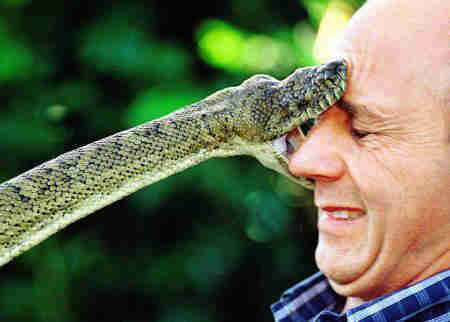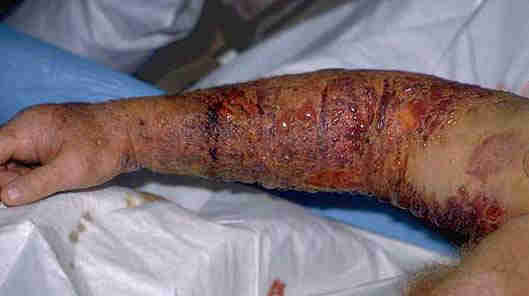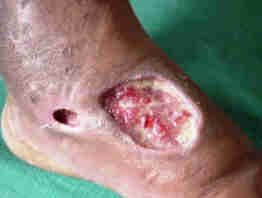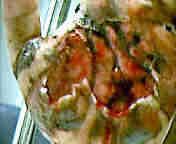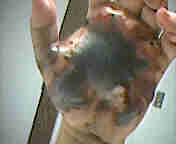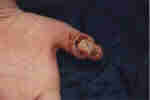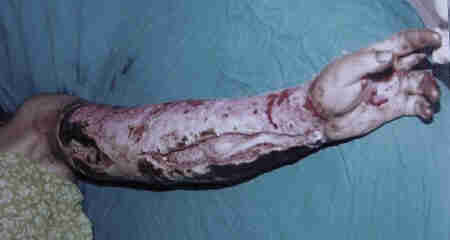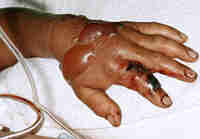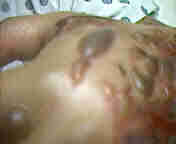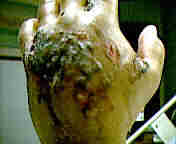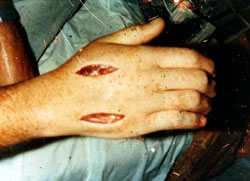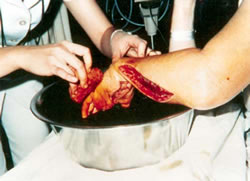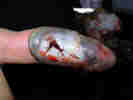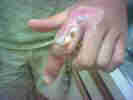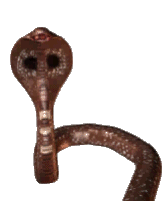
Snake Bites

|
Despite their sinister reputation, snakes are almost always more scared of you than you are of them. Few snakes, with the occasional exception of king cobras or black mambas, act aggressively toward a human without provocation. Worldwide only 15% of over 3000 species of snake are considered dangerous to humans.
Snakes have no limbs, yet all are meat eaters. They catch prey that includes insects, birds, small mammals, and other reptiles, sometimes including other snakes. Only about 400 of 3000 snake species worldwide inject venom (a poison). Many snakes catch their prey by constriction. In constriction, a snake suffocates its prey by tightening its hold around the chest, preventing breathing or causing direct cardiac arrest. Snakes do not kill by crushing prey. Some snakes grab prey with their teeth and then swallow it whole. Snakes that inject venom use modified salivary glands. Venom is a modified form of saliva and probably evolved to aid in chemical digestion. Varying degrees of toxicity also make it useful in killing prey. During envenomation (the bite that injects venom or poison), the venom passes from the venom gland through a duct into the snake's fangs, and finally into its prey. Snake venom is a combination of numerous substances with varying effects. In simple terms, these proteins can be divided into 4 categories:
Cytotoxins cause local tissue damage.
Hemotoxins cause internal bleeding.
Neurotoxins affect the nervous system.
Cardiotoxins act directly on the heart.
Snake venom is discharged through hollow fangs in the upper jaw from glands found below each eye. The volume of venom released may have been assessed by the snake before striking to suit the size of the prey. It is also affected by the degree of threat and whether the snake has discharged venom recently. The venom is made up mostly of water but imparts venomous effect according to the properties of enzymatic proteins in the venom.
It has been estimated that 5 million snakebites occur worldwide each year, causing about 125,000 deaths. Snakebites are more common in tropical regions and in areas that are primarily agricultural. In these areas, large numbers of people coexist with numerous snakes. People provoke bites by handling or even attacking snakes in a significant number of cases. Snakes often bite their prey when feeding, but occasionally they also bite humans. People can avoid and treat snakebites by knowing their etiology, along with prevention tips, and first-aid and hospital treatment.
Snake bites can be deadly if not treated quickly. Children are at higher risk for death or serious complications due to snake bites because of their smaller body size. The right antivenom can save a person's life. Getting to an emergency room as quickly as possible is very important. If properly treated, many snake bites will not have serious effects. All snakes will bite when threatened or surprised, but most will usually avoid people if possible and only bite as a last resort. Snakes found in and near water are often mistaken as being poisonous. Most species of snake are harmless and many bites are not life-threatening, but unless you are absolutely sure that you know the species, treat it seriously. |
